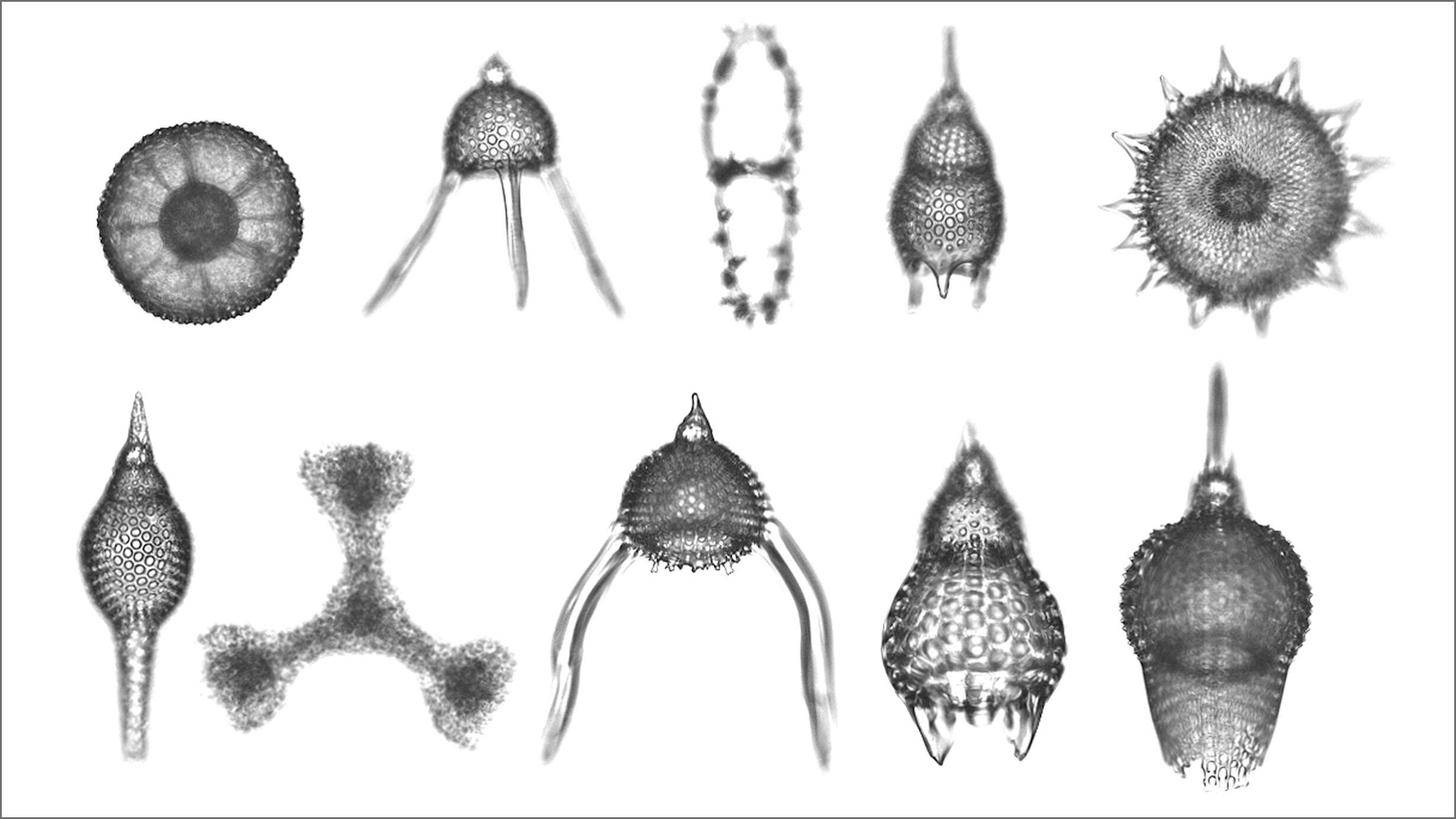 There are more than 15,000 living and fossil species of radiolaria, of which 800 to 1,000 species live in the world’s oceans.
There are more than 15,000 living and fossil species of radiolaria, of which 800 to 1,000 species live in the world’s oceans.Randolph Femmer/USGS Library of Images From Life courtesy of pali_nalu/Flickr
Radiolarians have captivated scientists since these single-celled organisms were first observed under the microscope in the 19th century. Neither animals, plants, nor fungi, these soft-bodied organisms are protists and are notable for their ability to absorb silica from seawater to form elaborate skeletal structures. They are also incomparably beautiful, as seen in the glass model of the radiolarian Elatomma juniperinum from the Hall of Biodiversity pictured below.
D. Finnin/©AMNH
While still poorly understood in many ways, radiolarians are thought to hold significant clues to the evolution of life on Earth, as well as insights into changing climatic conditions over time. They have existed for at least 550 million years and are found in all the world’s oceans and other bodies of saltwater, from the surface to the seafloor. They travel alone or in gelatinous colonies, some large enough to be seen with the naked eye. Along with other plankton, or free-floating organisms, they are a food source for other marine life. They themselves are known to feed by two methods: ingesting bacteria and other microbes they capture using arm-like extensions called axopods, and through the photosynthesis of symbiotic algae.
Read about glassblower Herman O. Mueller, who made some 1,000 models of microbes—including radiolaria—during his 40 years working at the Museum.
Of the reported 15,000 living and fossil species of radiolaria, some 800 to 1,000 species are currently known to inhabit the oceans, where they play an important role in Earth’s carbon-oxygen cycle. Like diatoms, single-celled algae that also form silica skeletons, radiolarians sink after death, trapping atmospheric carbon in the sediment of the deep oceans. The composition and distribution of their fossils are used to estimate past water temperature and salinity in the oceans.
Still, mysteries about these single-celled organisms abound—from their life span to their method of reproduction to the exact nature of their relationship with their algal symbionts. New tools, such as DNA sequencing and increasingly refined imaging techniques, offer researchers the hope of a more complete understanding. But in the meantime, it may be enough for the rest of us to simply admire how, as Charles Darwin said in On the Origin of Species, “from so simple a beginning endless forms most beautiful and most wonderful have been, and are being, evolved.”
A version of this story appeared in the Fall 2019 issue of the Member magazine, Rotunda.